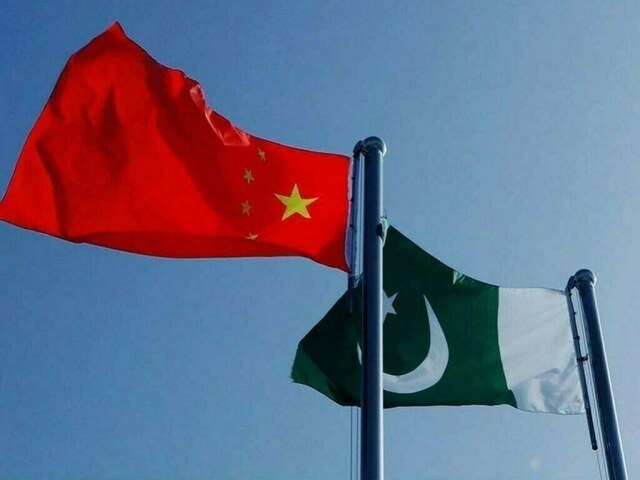Copyright brecorder

The 20th Central Committee of the Communist Party of China concluded its fourth plenary session successfully in Beijing on October 23, marking a significant milestone and defining moment in China’s ongoing evolution of governance and global engagement, and carrying the Chinese modernization forward. The Plenum, deliberated and adopted the recommendations for the 15th Five-Year Plan to be presented to the National People’s Congress Session coming March, and produced a Communiqué identifying key targets and priority areas for reforms and opening up, outlining the goals of building a socialist market economy over the next five years, and calling for further deepening reforms comprehensively to shape the future trajectory of China’s development. By 2035, China is set to build a high-standard socialist market economy in all respects, further improve the system of socialism with Chinese characteristics, generally modernize the system and capacity for governance, and basically achieve socialist modernization. These efforts will lay a solid foundation for building China into a great modern socialist country by the mid-century. The Plenum conducted an in-depth analysis of the complex environment China will face during the next five-year period, where strategic opportunities exist alongside risks and challenges, while uncertainties and unforeseen factors are rising. It emphasized the instrumental role comprehensive reforms and opening up can play to navigate the complexities. Highlighting the CPC’s mandate on and commitment to strengthening socialism with Chinese characteristics, the Plenum pointed out that the Chinese economy is on solid foundations, demonstrating advantages in many areas, strong resilience, and great potential. It aimed to push ahead with all-round economic reforms, enhance democratic governance, foster a strong socialist culture, build a strong military, improve people’s livelihoods and advance its global outreach. The Plenum set major objectives for China’s socioeconomic development in next five years: significant achievements in high-quality development; substantial progress in scientific and technological advancement; fresh breakthroughs in further deepening reforms comprehensively; notable cultural and ethical improvement across society; further betterment in quality of life; major strides in building the Beautiful China Initiative; and strengthening the national security shield. It pledged to improve the institutions and mechanisms for fostering new quality productive forces in line with national conditions, promoting full integration between the real economy and the digital economy, developing the service sector, modernizing infrastructure, and enhancing the resilience and security of industrial and supply chains. The Plenum stated that advanced manufacturing should remain the backbone of the economy and defined major strategic plans in 12 areas, providing top-level design for socioeconomic development 2026-2030. The Plenum announced that the Party and Government of China will bank on further innovation, sustainable development and building a unified domestic market as key to the country’s future growth. It stressed that education, science and technology are the basic fabric of and strategic underpinnings for the Chinese modernization, and stated that the country must adopt holistic approach and innovation-driven strategy, nurture a quality workforce, making coordinated efforts to leverage the latest tech revolution to its growth. The plenary session also called for promoting green development through carbon reduction, pollution mitigation, and improvement of environmental governance systems and low-carbon development mechanisms, aiming to achieve the peak carbon by 2030 and carbon neutrality by 2060, making the green economy a major engine of growth. On foreign trade and external relations, the CPC moot sent out a positive signal that China will continue to share development opportunities with all countries in the world for mutual benefit and win-win outcomes. It reiterated that China is dedicated to promoting the Belt and Road cooperation, safeguarding the multilateral trading system, and striving for an equal and orderly multipolar world and universally beneficial and inclusive economic globalization. The CPC session stated that, by carrying out deepening institutional-level reforms comprehensively and high-standard opening up, and implementing the Four Major Global Initiatives on development, security, civilization and governance, China is to build a community with a shared future for humanity. And the Chinese modernization works for 1.4 billion Chinese and is for peaceful development and shared prosperity for all, aiming at both material and spiritual-cultural progress and harmony between humanity and nature. The 15th Five-Year Plan recommendations, together with the ongoing Chinese modernization, will have a positive impact on the development of China-Pakistan relations. As an All-Weather Strategic Cooperative Partner, Pakistan is entitled to benefit from this. The Action plan to foster an even closer China-Pakistan community with a shared future in the new era (2025-2029), signed by the two governments lately, is perfectly aligned with the key areas and development priorities defined by the 4th Plenum of the CPC, which is bound to open up new avenues and broad prospects for strategic coordination and practical cooperation between the two countries. Building a modern Chinese industrial system and accelerating rural and agricultural modernization in line with the 15th Five-Year Plan, dovetail with the key cooperation areas of the China-Pakistan Economic Corridor. The two countries will work closer to promote industrial development, special economic zones, agricultural mechanization and mineral exploration. Pakistan’s export to China will continue to rise; and infrastructure connectivity will be further reinforced. China will do more livelihood projects in Pakistan in health-care, education, and climate resilience. The two countries are set to further expand collaboration in emerging industry and frontier technologies to empower Pakistan’s socioeconomic growth. China will continue to stand by Pakistan in safeguarding its national security and territorial integrity, deepening mutual cooperation on defense, security, and combating terrorism. Given that 2026 marks the 75th anniversary of the establishment of diplomatic relations between China and Pakistan, it is foreseen that more enhanced cultural exchanges and people-to-people ties will come after the 4th Session. The Plenum has injected a new momentum into developing the China-Pakistan relations. For Global South countries, the outcomes of this Session offer lessons in strategic continuity and adaptive reform. China’s success demonstrates that modernization needs not follow a Western template. It can instead emerge from indigenous wisdom, gradual reform, and a commitment to people-centered governance. For Pakistan, China offers an alternative paradigm for modernization, one that demonstrates how industrial advancement and ecological responsibility can coexist, and how state-led planning, when rooted in public welfare and long-term vision, can yield sustainable outcomes in a volatile global economy. I believe that under the strategic guidance of the leaders of the two countries, China and Pakistan are able to better align our development strategies, forcefully implement the Action Plan, deepen mutual political trust, expand multifaceted cooperation, and make greater contribution to regional peace, stability and prosperity. Taking the implementation of the spirit of the 4th plenary session of the 20th Central Committee of the CPC as a launchpad, China and Pakistan can work hand in hand to seize the opportunities, face the challenges, deliver more for peoples, and jointly write a new chapter on the time-honored friendship and bilateral relations. Copyright Business Recorder, 2025



